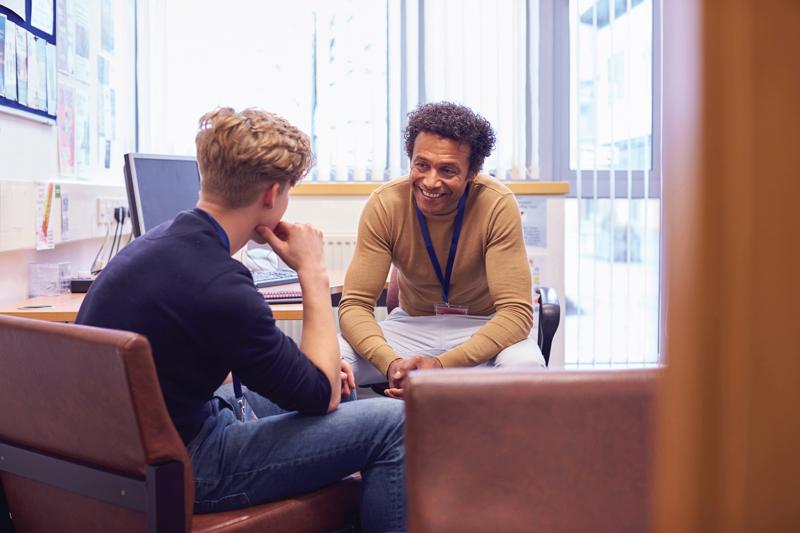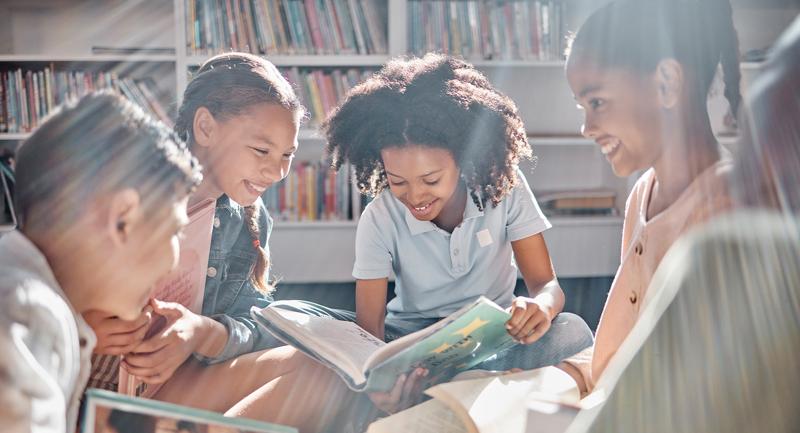Believe it or not, there’s never been a better time to be a teacher than right now.
Truly.
Yes, I know many teachers feel overwhelmed by students arriving in their classrooms with unprecedented levels of dysregulation, shattered attention spans, and myriad other challenges (Hatfield, 2024).
But despite these challenges, we have a good reason to feel hopeful about teaching as a profession: We now know more about how our brains learn, and how to support learning, than at any point in human history. Modern educators have at their fingertips powerful insights from cognitive psychology (the science of learning) and rigorous classroom research (the science of teaching) about how we can lift all learners—even reluctant and distracted ones.
Learning—What the Science Says
Let’s start with some insights about the process of learning, which, despite being decades old, have been slow to find their way into student learning experiences (Brown, Roediger, & McDaniel, 2014) or teacher preparation programs (Pomerance, Greenberg, & Walsh, 2016).
Curiosity supports learning. Because our brains are incessantly bombarded by more stimuli than they can process, they tend to ignore boring things and pay attention to novel or interesting stimuli (Medina, 2008)—in short, things that pique our curiosity. Lab studies, in fact, show we are more apt to retain information that sparks our curiosity (Gruber, Gelman, & Ranganath, 2014).
We process verbal information better when it’s paired with visual information. Our brains can only focus on one thing at a time, such as one person speaking to us or one item in our field of vision. Yet our brains have the remarkable ability to focus on visual and verbal information at the same time, an ability called dual coding; lab experiments show we process learning better when it’s presented visually and verbally (Clark & Paivio, 1991).
We only learn what we think about. Learning requires our brains to translate electrical impulses from sensory stimuli into memory traces via a process called encoding. Before these initial memory traces fade, we need to stabilize and connect them with existing neural networks (a process called consolidation). One of the surest ways to do this is to think about new learning as we encode it. As cognitive scientist Daniel Willingham notes, “What ends up in a learner’s memory is not simply the material presented—it is the product of what the learner thought about when he or she encountered the material” (2003, p. 77). If students are merely passively hearing or seeing new information, they’re not actually learning; that only occurs when students think about the information.
We must repeat and return to new learning in multiple ways to make it stick. Most of what our brains encounter and think about never gets stored in long-term memory—by design. After all, if we could remember the name of everyone we ever met, everywhere we ever parked our car, or what we’ve read on the back of every cereal box, our brains would be so full of useless information we’d be unable to function. Our brains do us the favor of forgetting most of what we encounter. So, how do we get new information to stick in our minds? There’s really just one way: repetition (Medina, 2008).
Repeating new memories signals our brains to wrap the synapses that hold them in a substance called myelin, which helps them fire together more readily (Ibid). The best ways to trigger myelin formation are to (a) spread repetitions of new memories out over time and (b) practice a mix of related skills during a single practice session, engaging in what cognitive scientists call interleaved practice, such as solving math problems in which no two consecutive problems require the same strategy (Rohrer et al., 2020). In short, the time-honored practice of cramming the night before a test doesn’t work—at best, it creates the illusion of knowing something; the new knowledge gained quickly fades because, according to cognitive scientists, the “procedures that produce fast learning can produce fast forgetting” (Roediger & Pyc, 2012, p. 243). As a result, students tend to forget most of what they “learn” in the classroom within a few weeks (Medina, 2008).
We have good reason to feel hopeful about teaching: We now know more about how our brains learn, and how to support learning, than at any point in human history.
Teaching— What the Science Says
Most of these science of learning insights were discovered through laboratory experiments, which are, of course, far removed from the messiness and individual differences in most classrooms. So, how does any of this, you might ask, apply to real-world classrooms?
As it turns out, these science of learning principles are reflected in teaching strategies that have been proven by scientific studies to work in classrooms—what we might call the science of teaching. My colleagues and I at McREL International, a nonprofit education research organization, have sifted through hundreds of scientific studies conducted in real classrooms. Across these scientific studies, we have found 14 teaching strategies with powerful effects on student learning and shared them in The New Classroom Instruction That Works (Goodwin et al., 2022). Notably, these strategies all reflect core principles from the science of learning, which likely explains their powerful, universal effects on learning. Moreover, in our efforts to help teachers apply these strategies in their own classrooms, we’ve found that their real “magic” lies in teachers connecting them to research on the science of learning, which often leads to teachers gaining breakthrough understanding of knowing not only what to do and how to do it, but also why and when to use a particular strategy to unlock each student’s potential.
When the Science of Learning and Teaching Intersect
To illustrate, here’s how four of these 14 strategies tap into underlying principles from the science of learning and thus, make learning easier and more joyful for students.
Unleash student curiosity with cognitive interest cues. A recurring element of many of the effective teaching interventions we found in these studies was the use of framing devices to spark student interest in learning. We labeled this strategy “cognitive interest cues” to reflect that they were more than just attention-getting gimmicks or advanced organizers telling students where a lesson was going. They were intentional efforts to pique students’ interest and curiosity in the topic at hand, such as anchoring math in real-life problems (calculating the costs to build skateboard ramps on a budget), engaging in hands-on science experiments (dissecting owl pellets), or inviting students to make personal connections to new learning (connecting psychology to lived experiences). Cognitive science reveals why these strategies are so powerful: By sparking curiosity, they prime students’ brains for learning, making it more meaningful and, ultimately, “stickier.”
Make learning visual. Across a few dozen studies, we found teaching strategies that tapped into the power of dual coding by pairing verbal and visual learning. For example, the use of graphics, visuals, videos, illustrations, and concrete examples significantly enhanced students’ acquisition of new factual (declarative) knowledge. We labeled this strategy “visualizations and concrete examples.” We identified a similar strategy with powerful effects for building students’ skills-based (procedural) knowledge—namely, guiding students step-by-step through new procedures and illustrating correct problem-solving techniques via worked-out examples. We labeled this technique “strategy instruction and modeling.” Basically, these studies suggest that students learn better when teachers “show and tell” new skills and knowledge—for example, guiding students verbally through the process for solving word problems (find the problem, organize information in the problem, plan to solve the problem, and solve the problem) while using worked-out examples and diagrams to help them visualize the process (Jitendra et al., 2009).
Engage students in thinking about their learning with high-level questions. In multiple studies, a key element of effective classroom interventions was the use of complex high-level questions to prompt student thinking about learning. We labeled this strategy “high-level questions and student explanations” to reflect an important nuance about classroom questions: They should do more than ask students to recall new information, but rather, engage them in thinking about new learning, making learning visible, and explaining their ideas and approaches for solving problems. Doing so helps students to more effectively encode and consolidate their learning. Engaging students in explaining their thinking can make the previous strategies for visual learning even more powerful—for example, prompting students to explain their thinking during each problem-solving step (e.g., “Did I read and retell the problem to understand what is given and what must be solved?”).
Engage students in writing to learn. Finally, we found a significant number of effective interventions across subject areas (science, social studies, language arts, and math) that engaged students in writing about their learning. We labeled this strategy “cognitive writing,” as we observed that the key principle underlying this strategy was not learning to write (though some interventions scaffolded students’ writing skills) but rather, writing to learn—students responding to writing prompts that required them to think about their learning, develop original ideas, and revisit their thinking. As with the other interventions, cognitive writing also lifted all learners, including multilingual learners and previously low-performing students. For example, a study involving nearly 4,000 students in high-poverty urban middle schools found powerful, positive effects on standardized language arts assessments for engaging students in a combination of direct instruction in writing skills (e.g., planning, drafting, improving descriptions, getting readers’ attention, revising, editing) and frequent extended writing assignments on topics meaningful to them (e.g., writing their own endings to stories or writing a short story in the style of O. Henry) (Stevens, 2003).
These science of learning principles are reflected in teaching strategies that have been proven by studies to work in classrooms—what we might call the science of teaching.
Taking Back Our Students’ Brains
On the surface, these teaching strategies are hardly earth-shaking. Great teachers have long intuitively understood the benefits of hooking student interest in learning, making it visual, prompting student thinking with questions, and engaging them in writing about their learning. That itself is good news. Teachers needn’t master complicated, newfangled strategies to help students succeed. Nor does teaching with the brain in mind require huge investments in technology or programs; it is an inexpensive, yet powerful way to lift all learners (Roediger & Pyc, 2012).
What may be most important here, though, is that when applied consistently and effectively in every classroom, the science of teaching and learning can serve as a counterbalance to one thing that seems to be driving our students (and teachers) to distraction: namely, smartphones diverting students’ focus from classroom learning (Hatfield, 2024). Many tech programs are intentionally designed to be alluring and addictive. Social media companies and app developers have been using many of these same principles of cognitive science to rewire our brains and “steal” and monetize our attention spans—for example, using curiosity to draw us into internet rabbit holes, capturing our eyeballs with compelling visual imagery, and compelling us to return to apps day after day to keep our streaks going (Haidt, 2024; Hari, 2022). So it’s not surprising that a growing body of research suggests screen media use may be restructuring young people’s brains and impairing their cognitive functioning (Paulus et al., 2019; Wilmer, Sherman, & Chein, 2017).
That’s the bad news.
Here’s the good news. We are not powerless as educators. We can use cognitive science to help our students “take back” their brains. We can design and deliver learning experiences that pique their natural curiosity, make learning visually compelling, engage them in thinking (and writing about) their learning to make it stick, and encourage them to go on “streaks” of repeated practice sessions over time. Such learning experiences can help our students’ brains find their happy place—where learning feels natural, joyful, and rewarding.
And that is something worth celebrating.









